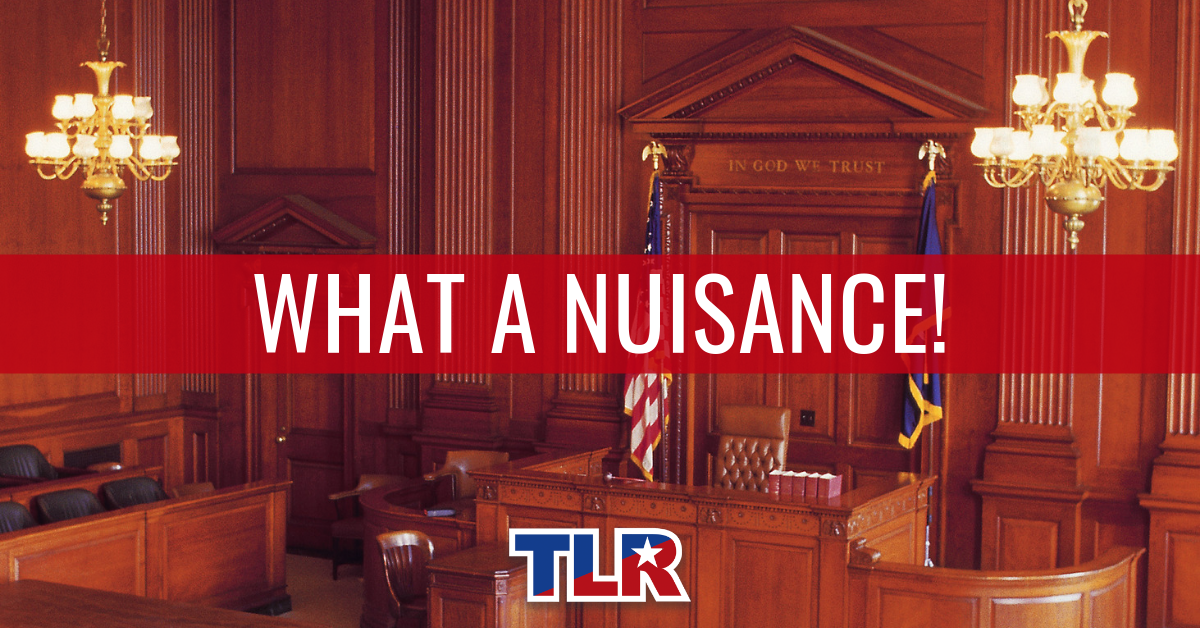
Opioid litigation is prominently in the news these days, with a recent judgment in Oklahoma and the ongoing conflict between states and municipalities in the federal multi-litigation process conducted by U.S. District Judge Dan Polster in Ohio.
As we have said before, we don’t have an opinion on who is responsible for the nation’s opioid epidemic, but we remain concerned that the wave of litigation will do little to stop it—just as the tobacco settlement of the 1990s did little to stem cigarette consumption. And we share the Wall Street Journal editorial board’s criticism of the Oklahoma ruling, which enormously expanded the real-property legal doctrine of a public nuisance to hold a pharmaceutical company liable for expenses related to the treatment of opioid misuse.
The essential legal concept of a nuisance, as defined in Black’s Law Dictionary, is a “condition, activity, or situation (such as a loud noise or foul odor) that either injures the physical condition of adjacent land or interferes with its use or with the enjoyment of easements on the land or of public highways.” Liability might or might not arise from the situation, and the appropriate remedy is most often to require the landowner to abate the cause of the nuisance. It is more than troubling to see a court expand this doctrine to impose damages on the manufacturer of a legal and FDA-approved product.
This particularly draws our attention because 25 years ago, a major impetus to the creation of TLR was the then-activist Texas Supreme Court, which for years was populated mostly by former personal injury plaintiffs’ lawyers. That old, liberal court, legislating from the bench, created or expanded causes of action to produce results it deemed “just” or opportune, regardless of legal precedent or the plain words of applicable statutes. We have come a long way since the days of jackpot justice in Texas and are vigilant in guarding against their return through judicial activism.
In another matter related to opioid litigation, the federal judge in Ohio who is trying to resolve the hundreds of lawsuits by states, counties and cities is finding it difficult to do so because of infighting among the plethora of plaintiff lawyers representing the various states, counties and cities. He has approved an unusual process for facilitating a universal negotiation. “Under the proposal, every city and county would be asked to accept a prearranged formula for allocating opioid money before any settlement has been struck, with a 75% supermajority vote at the end to approve the settlement amount but not the underlying structure of the deal.” Texas is one of the states that has raised concerns about this approach.
This piecemeal approach to litigation does little to benefit those who have been affected by opioid addiction, in fact, making it more difficult for the state to pursue legitimate causes of action. House Bill 2826, which TLR advocated for and became effective on September 1, allows our state attorney general to prevent cities and counties from pursuing litigation when “the attorney general has the authority to pursue the legal matter … and that it is in the state’s best interest for the attorney general to pursue the matter …” This law does not affect lawsuits filed prior to September 1, but hopefully it will prevent the feeding frenzy we’ve seen with plaintiff attorneys around this kind of litigation in the future.
